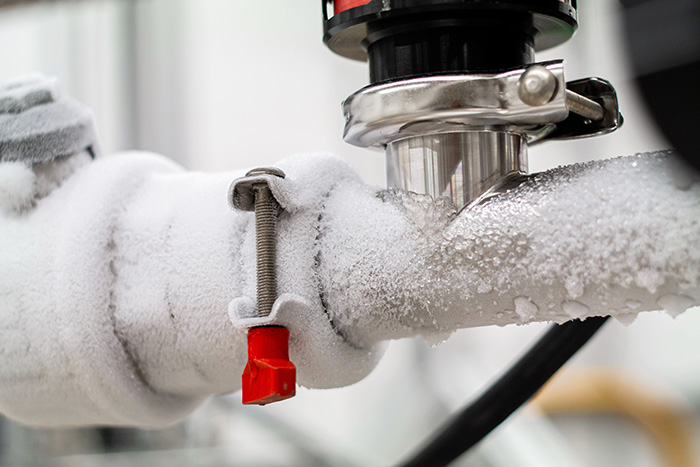Advice for Preventing Frozen Plumbing in Cold Weather: Expert Tips
Advice for Preventing Frozen Plumbing in Cold Weather: Expert Tips
Blog Article
What're your thoughts concerning How To Avoid Freezing Pipes?

Winter can wreak havoc on your pipes, especially by freezing pipes. Below's exactly how to stop it from happening and what to do if it does.
Intro
As temperatures decline, the risk of icy pipes boosts, possibly resulting in expensive repairs and water damage. Recognizing how to avoid icy pipes is vital for homeowners in chilly environments.
Recognizing Icy Pipes
What causes pipelines to ice up?
Pipes freeze when revealed to temperature levels below 32 ° F (0 ° C) for expanded periods. As water inside the pipes ices up, it expands, taxing the pipeline walls and possibly triggering them to burst.
Dangers and damages
Frozen pipelines can result in water disruptions, residential or commercial property damages, and costly repair work. Ruptured pipelines can flood homes and trigger considerable structural damage.
Indications of Frozen Pipes
Recognizing frozen pipelines early can avoid them from rupturing.
Exactly how to recognize icy pipes
Seek lowered water circulation from taps, unusual odors or noises from pipes, and noticeable frost on exposed pipes.
Avoidance Tips
Protecting at risk pipelines
Wrap pipes in insulation sleeves or make use of warmth tape to secure them from freezing temperatures. Concentrate on pipelines in unheated or exterior locations of the home.
Home heating techniques
Keep interior rooms effectively heated, particularly locations with plumbing. Open cupboard doors to enable cozy air to flow around pipelines under sinks.
Safeguarding Outside Pipes
Yard hoses and outside faucets
Detach and drain pipes yard tubes before winter months. Mount frost-proof faucets or cover outdoor faucets with protected caps.
What to Do If Your Pipelines Freeze
Immediate actions to take
If you believe frozen pipes, keep taps open up to relieve stress as the ice thaws. Make use of a hairdryer or towels soaked in hot water to thaw pipelines gradually.
Long-Term Solutions
Structural changes
Take into consideration rerouting pipelines away from outside walls or unheated areas. Include extra insulation to attic rooms, basements, and crawl spaces.
Updating insulation
Invest in high-quality insulation for pipelines, attics, and wall surfaces. Proper insulation assists keep consistent temperatures and reduces the danger of icy pipes.
Final thought
Preventing frozen pipelines calls for proactive procedures and fast feedbacks. By understanding the causes, indicators, and preventive measures, property owners can secure their plumbing during winter.
5 Ways to Prevent Frozen Pipes
Drain Outdoor Faucets and Disconnect Hoses
First, close the shut-off valve that controls the flow of water in the pipe to your outdoor faucet. Then, head outside to disconnect and drain your hose and open the outdoor faucet to allow the water to completely drain out of the line. Turn off the faucet when done. Finally, head back to the shut-off valve and drain the remaining water inside the pipe into a bucket or container. Additionally, if you have a home irrigation system, you should consider hiring an expert to clear the system of water each year.
Insulate Pipes
One of the best and most cost-effective methods for preventing frozen water pipes is to wrap your pipes with insulation. This is especially important for areas in your home that aren’t exposed to heat, such as an attic. We suggest using foam sleeves, which can typically be found at your local hardware store.
Keep Heat Running at 65
Your pipes are located inside your walls, and the temperature there is much colder than the rest of the house. To prevent your pipes from freezing, The Insurance Information Institute suggests that you keep your home heated to at least 65 degrees, even when traveling. You may want to invest in smart devices that can keep an eye on the temperature in your home while you’re away.
Leave Water Dripping
Moving water — even a small trickle — can prevent ice from forming inside your pipes. When freezing temps are imminent, start a drip of water from all faucets that serve exposed pipes. Leaving a few faucets running will also help relieve pressure inside the pipes and help prevent a rupture if the water inside freezes.
Open Cupboard Doors
Warm your kitchen and bathroom pipes by opening cupboards and vanities. You should also leave your interior doors ajar to help warm air circulate evenly throughout your home.

We had been shown that article about Prevent Frozen Pipes through a buddy on another site. For those who liked our blog post kindly do not forget to share it. Thanks so much for your time spent reading it.
Click Here Report this page